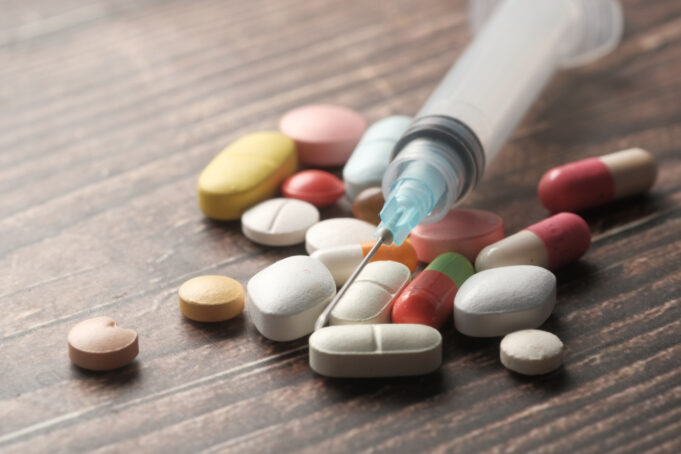The increasing contamination of water sources with pharmaceuticals poses a significant threat to public health and the environment. Conventional water treatment methods often fall short in effectively removing these micropollutants. However, a recent breakthrough by researchers at Carnegie Mellon University offers a promising solution.
The Problem of Pharmaceutical Contamination
Pharmaceuticals enter our water systems through various pathways, including the excretion of unused or expired medications, agricultural runoff, and industrial discharges. These micropollutants can have adverse effects on aquatic ecosystems and human health. Traditional wastewater treatment processes, while effective for removing larger contaminants, struggle to eliminate pharmaceuticals completely.
Enter TAML Catalysts
The Carnegie Mellon researchers developed a sustainable and efficient method using tetra-amido macrocyclic ligand (TMAL) catalysts and hydrogen peroxide. TAML catalysts, inspired by natural enzymes, have shown remarkable effectiveness in degrading a wide range of pollutants, with:
- High Efficiency: The TAML catalysts effectively degraded six common antibiotics, a synthetic estrogen, and a nonsteroidal anti-inflammatory drug.
- Low Concentrations: The process requires extremely low concentrations of both the catalyst and hydrogen peroxide, making it cost-effective and environmentally friendly.
- Versatility: The method demonstrated effectiveness in both laboratory water and real-world samples, including municipal wastewater and river water.
- Scalability: The researchers anticipate that the TAML/peroxide method can be easily scaled up for widespread application.
Advantages of TAML Catalysts
TAML catalysts offer a sustainable and cost-effective solution for water purification. These innovative compounds are designed to break down a wide range of harmful pharmaceuticals in wastewater, ensuring cleaner and safer water sources for our communities. Unlike traditional methods, this method is environmentally friendly, biodegradable, and requires only minimal concentrations, reducing operational costs. This versatility allows it to be applied to a wide range of water sources, from municipal wastewater, contaminated environmental waters, and industrial effluents. With their impressive efficiency and ability to target a variety of pharmaceuticals, TAML catalysts represent a promising advancement in water treatment technology. As research and development continue to advance, TAML catalysts are poised to play a significant role in shaping the future of water treatment technology.
Future Applications and Implications
The TAML/peroxide method has the potential to revolutionize water treatment practices. By providing a more effective and sustainable solution for removing pharmaceutical contaminants, it can help protect public health and the environment.
Key areas for future research and development include:
- Field Testing: Further testing in real-world settings is essential to validate the effectiveness of the method on a larger scale and under varying conditions.
- Integration with Existing Infrastructure: Exploring ways to integrate the TAML/peroxide method into existing water treatment facilities to minimize disruptions and maximize benefits.
- Treatment of Other Contaminants: Investigating the potential of TAML catalysts for removing other types of pollutants from water, such as pesticides, herbicides, or industrial chemicals.
- Long-Term Impacts: Assessing the long-term environmental and health impacts of using TAML catalysts in water treatment.
- Regulatory Approval: Navigating the regulatory landscape to ensure the safe and effective implementation of the TAML/peroxide method.
Additional Considerations
To fully realize the potential of TAML catalysts and their application in water treatment, it is crucial to consider several additional factors. Public awareness plays a vital role in driving progress. By raising awareness about the pervasive issue of pharmaceutical contamination and the innovative solutions available, we can foster a sense of urgency and support for research and development in this area.
Collaboration among researchers, policymakers, and industry stakeholders is also essential. By working together, we can accelerate the development and implementation of new water treatment technologies, such as the TAML/peroxide method. This collaborative approach can help overcome challenges, share knowledge, and ensure that these technologies are effectively integrated into existing water infrastructure.
The TAML/peroxide method has the potential to address water quality challenges in developing countries, where access to clean and safe water is often limited. By exploring opportunities for international cooperation and knowledge transfer, we can help ensure that this innovative solution benefits communities around the world.
The development of TAML catalysts represents a significant breakthrough in water treatment technology. By offering a sustainable, efficient, and cost-effective solution for removing pharmaceutical contaminants, this innovation has the potential to make a substantial impact on water quality and public health. As research continues to advance, we can expect to see even more widespread adoption of this promising technology.
SOURCES: Water, ACS Chemical Sustainability & Engineering, Environmental Science & Technology, Smart Water Magazine





